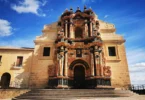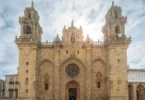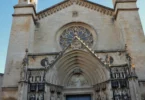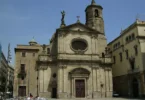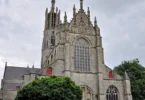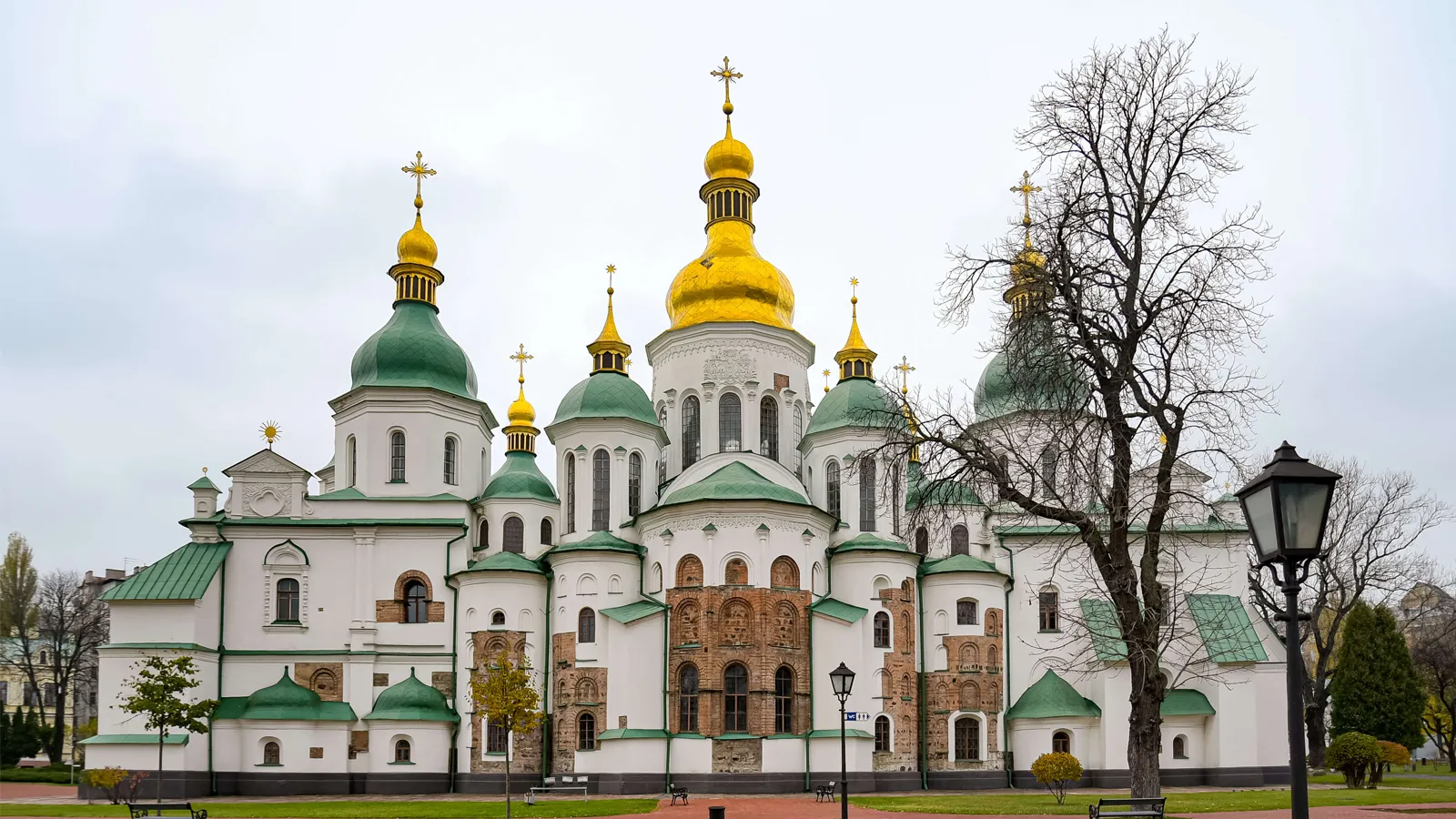
Introduction
Saint Sophia Cathedral in Kyiv, Ukraine, is an architectural monument of Kievan Rus’. The former cathedral is one of the city’s best known landmarks and the first heritage site in Ukraine to be inscribed on the World Heritage List along with the Kyiv Cave Monastery complex. Aside from its main building, the cathedral includes an ensemble of supporting structures such as a bell tower and the House of Metropolitan. In 2011 the historic site was reassigned from the jurisdiction of the Ministry of Regional Development of Ukraine to the Ministry of Culture of Ukraine. One of the reasons for the move was that both Saint Sophia Cathedral and Kyiv Pechersk Lavra are recognized by the UNESCO World Heritage Program as one complex, while in Ukraine the two were governed by different government entities. It is currently a museum. In Ukrainian the cathedral is known as Sobor Sviatoii Sofii or Sofiiskyi sobor
The complex of the cathedral is the main component and museum of the National Sanctuary “Sophia of Kyiv” which is the state institution responsible for the preservation of the cathedral complex as well as four other historic landmarks across the nation
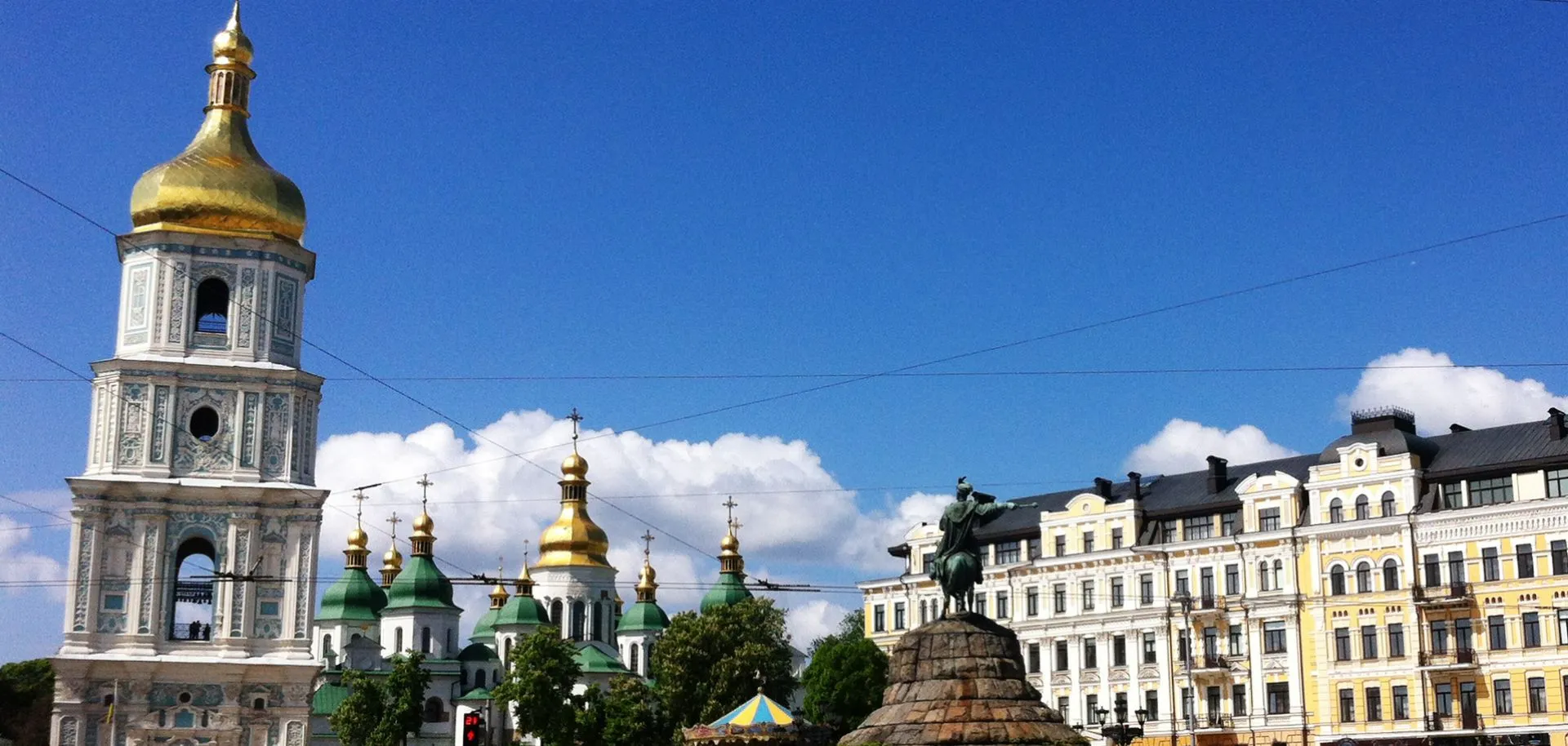
Saint Sophia Cathedral in Kyiv, Ukraine is a monument of 11th-century architecture, painting, and mosaic work. The cathedral was named after Hagia Sophia and, as the main temple of the state, played the role of its spiritual, political and cultural centre. Under the domes of Saint Sophia Cathedral, there were solemn inaugurations of the Grand Dukes, holy councils, receptions of ambassadors and the signing of political agreements. Chronicles were kept at the cathedral and the first known library in Rus was created there.
It is not known for sure who founded the cathedral; there are two common versions of the foundation of the shrine. According to Primary Chronicle, the founder of the cathedral was Duke Yaroslav the Wise of Kyiv who built the cathedral in 1037 after his decisive victory over Pechenegs. Other sources state that the cathedral was founded by Vladimir the Great (c. 958-1015) in 1011. After the research of wall inscriptions inside the cathedral, historians assumed that it is possible the foundation of the cathedral was laid in 1011. The second theory has been accepted by both the Ukrainian government and UNESCO, which solemnly celebrated the 1000th anniversary of the cathedral in 2011.
The cathedral is named after the 6th-century Hagia Sophia (Holy Wisdom) cathedral in Constantinople (present-day Istanbul), which was dedicated to the Holy Wisdom rather than to a specific saint named Sophia. The first foundations were laid in 1037 or 1011, but the cathedral took two decades to complete. According to one theory, Yaroslav the Wise sponsored the construction of the Saint Sophia Cathedral in 1037 to celebrate his decisive victory over the nomadic Pechenegs in 1036 (who thereafter were never a threat to Kyiv). According to Dr. Nadia Nikitenko, a historian who has studied the cathedral for 30 years, the cathedral was founded in 1011, under the reign of Yaroslav’s father, Grand Prince of Kievan Rus, Vladimir the Great. This has been accepted by both UNESCO and Ukraine, which officially celebrated the 1000th anniversary of the cathedral during 2011. The structure has 5 naves, 5 apses, and (quite surprisingly for Byzantine architecture) 13 cupolas. It is surrounded by two-tier galleries from three sides. Measuring 37 to 55 m (121 to 180 ft), the exterior used to be faced with plinths. On the inside, it retains mosaics and frescos from the 11th century, including a dilapidated representation of Yaroslav’s family, and the Orans.
Originally the cathedral was a burial place of the Kievan rulers including Vladimir Monomakh, Vsevolod Yaroslavich and the cathedral’s founder Yaroslav I the Wise, although only the latter’s grave survived to this day. Since the late 1980s, Soviet, and later Ukrainian, politicians promised to return the building to the Orthodox Church. Due to various schisms and factions within the Church the return was postponed as all Orthodox and the Greek-Catholic Churches lay claim to it. Although all the Orthodox churches have been allowed to conduct services at different dates, at other times they are denied access. A severe incident was the funeral of Patriarch Volodymyr of the Ukrainian Orthodox Church – Kyiv Patriarchate in . The complex now remains a secular museum of Ukraine’s Christianity, with most of its visitors being tourists. On 21 August 2007, the Holy Sophia Cathedral was named one of the Seven Wonders of Ukraine, based on votes by experts and the internet community.
On September 2023, Kyiv was listed as a World Heritage “in danger” because of Russia’s war in Ukraine. This move by the United Nations was an effort to produce aid and protection for the site.
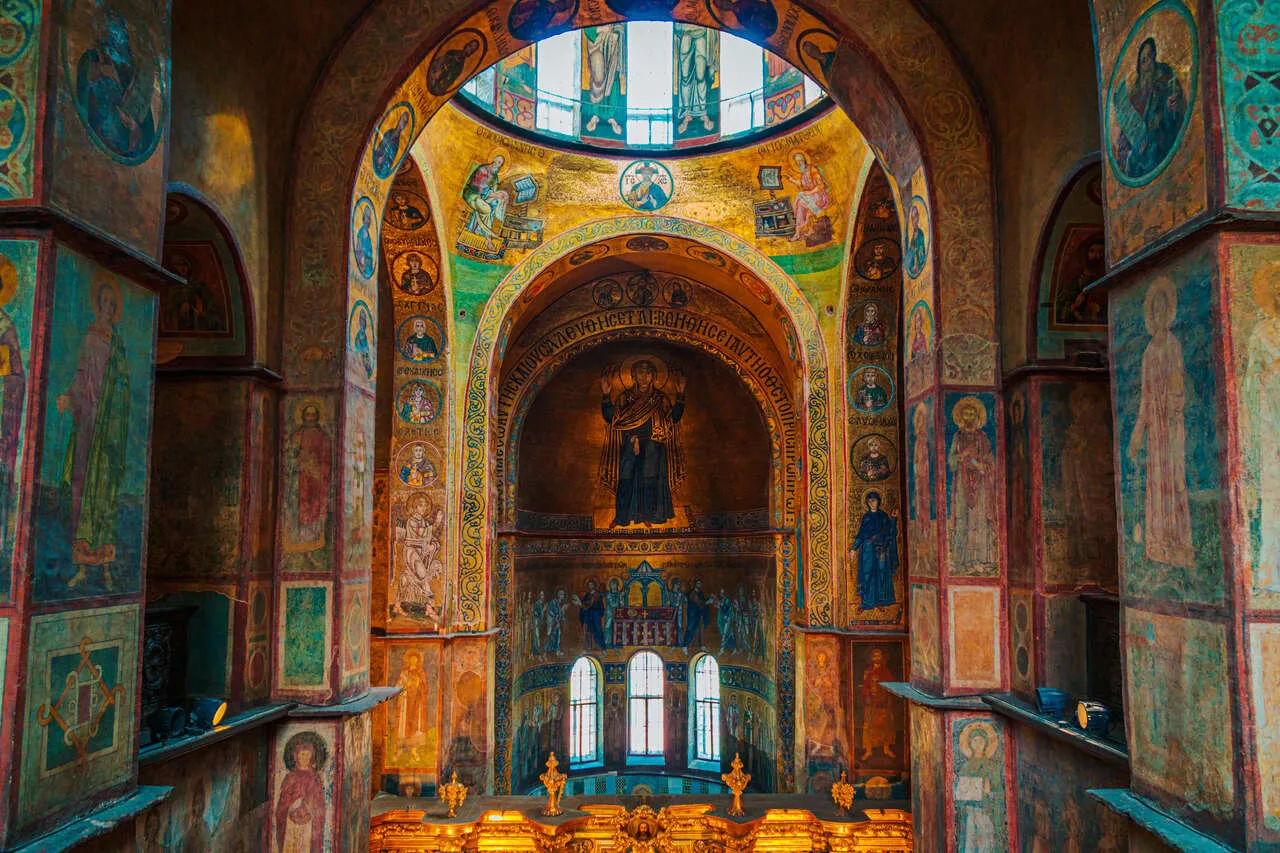
Saint Sophia Cathedral, in 1889, Department of Image Collections, National Gallery of Art Library, Washington, DC. After the pillaging of Kyiv by Andrei Bogolyubsky of Vladimir-Suzdal in 1169, followed by the Mongol invasion of Rus’ in 1240, the cathedral fell into disrepair. It was greatly rebuilt in its modern splendor in the 16th century, when the Polish–Lithuanian Commonwealth was trying to unite Catholic and Orthodox churches. Following the 1595–96 Union of Brest, the Cathedral of Holy Sophia belonged to the Ukrainian Greek Catholic Church which commissioned the repair work and the upper part of the building was thoroughly rebuilt, modeled by the Italian architect Octaviano Mancini in the distinct Ukrainian Baroque style, while preserving the Byzantine interior, keeping its splendor intact. The work continued under the Cossack Hetman Ivan Mazepa until 1767. During this period around Holy Sophia Cathedral a bell tower, a monastery canteen, a bakery, a “House of Metropolitan”, the western gates (Zborovski gates), a Monastic Inn, a Brotherhood campus and a bursa (seminary) were all erected. All of these buildings, as well as the cathedral after the reconstruction, have distinctive features of Ukrainian Baroque. The museum depicted on a 1988 5 rouble Soviet coin with a Russian inscription
After the October Revolution of 1917 in Russia and during the Soviet anti-religious campaign of the 1920s, the government plan called for the cathedral’s destruction and transformation of the grounds into a park “Heroes of Perekop” (after a Red Army victory in the Russian Civil War in Crimea). The cathedral was saved from demolition (the opposite St. Michael’s Golden-Domed Monastery was blown up in 1935) primarily with the effort of many scientists and historians. Nevertheless, in 1934, Soviet authorities confiscated the structure from the church, including the surrounding 17th–18th-century architectural complex and designated it as an architectural and historical museum.
The Bell Tower
The Bell Tower of Saint Sophia Cathedral in Kyiv is a monument of Ukrainian architecture in the style of Ukrainian (Cossack) Baroque. It is one of the Ukrainian national symbols and symbols of the city of Kyiv.
Feast Day
Feast day : September 30th
In the world of western Christianity, this feast is celebrated on 17 September, while eastern Christians mark it on 30 September. Greek Catholicism, although Orthodox, or Byzantine, in style, ritual, and calendar, has been in union with the Roman Catholic Church since 1596. While eastern Orthodoxy is the majority religion of Ukraine, Greek Catholicism predominates in Lviv and the surrounding region of Ukrainian Galicia.
Opening Time
Monday 10:00 A.M – 06:00 P.M
Tuesday 10:00 A.M – 06:00 P.M
Wednesday 10:00 A.M – 05:00 P.M
Closed Thu.
Mass Timing
Weekday at 7:00 pm
Saturday at 10:00 am
Sunday at 9:30am.
Contact Info
Address :
Volodymyrska St, 24, Kyiv, Ukraine, 01001
24, Volodymyrska street, Kiev, Ukraine
Phone: +380 44 278 2620
Accommodations
Connectivities
Railway
Kyiv-Pasazhyrskyi Railway Station To Saint Sophia Cathedral Distance 10 Min (3.4 Km) Via St. Pavlo Skoropadskyi And Str. Volodymyrska
Airway
Kiev Zhuliany International Airport To Saint Sophia Cathedral Distance 28 Min (13.2 Km) Via Air Force Avenue


